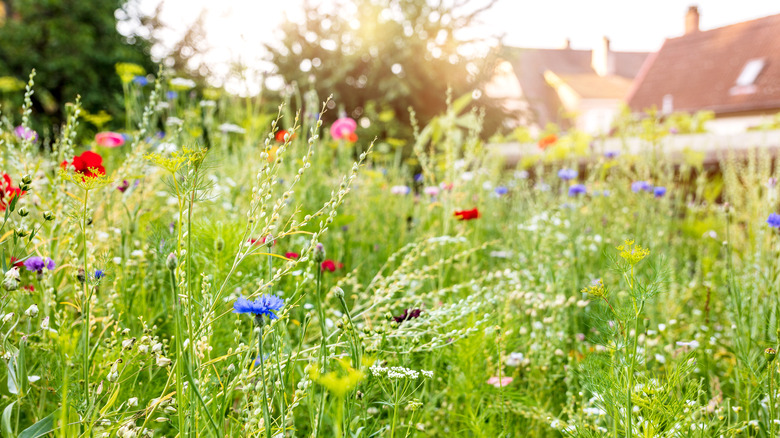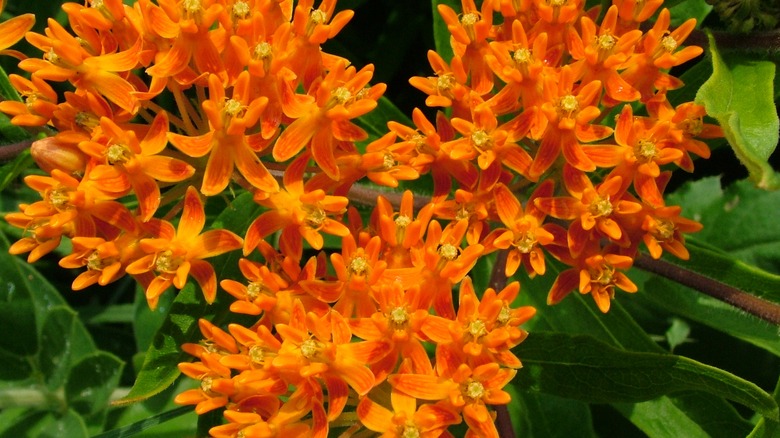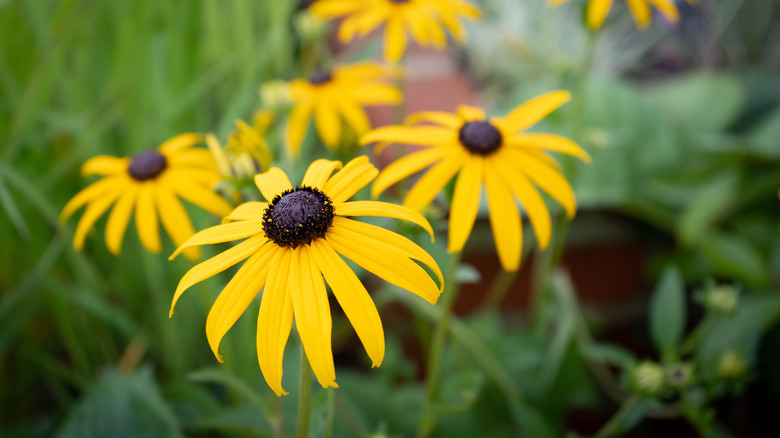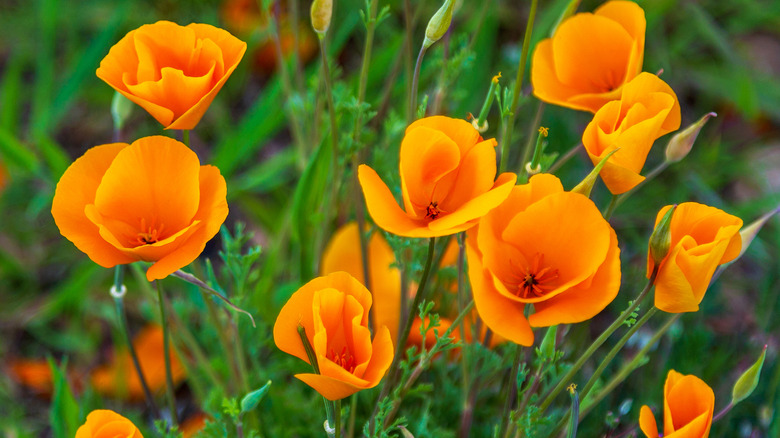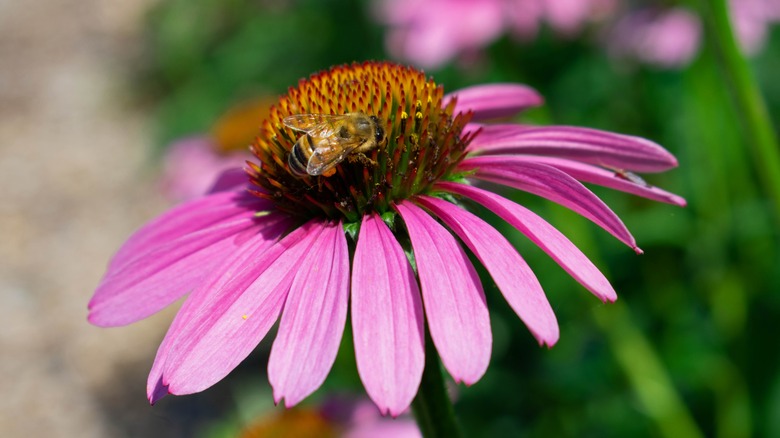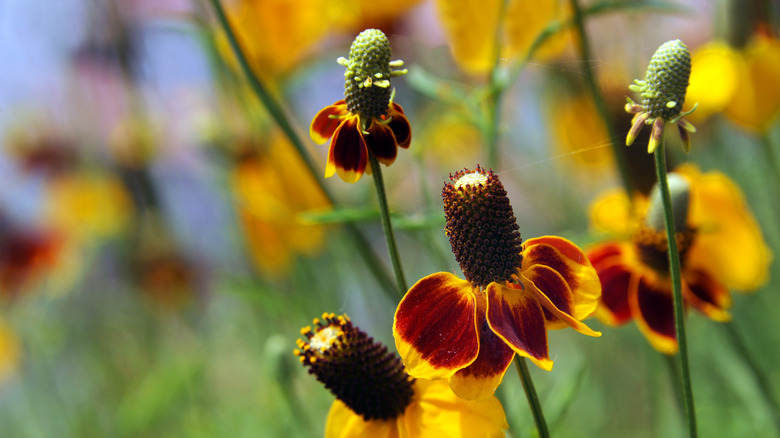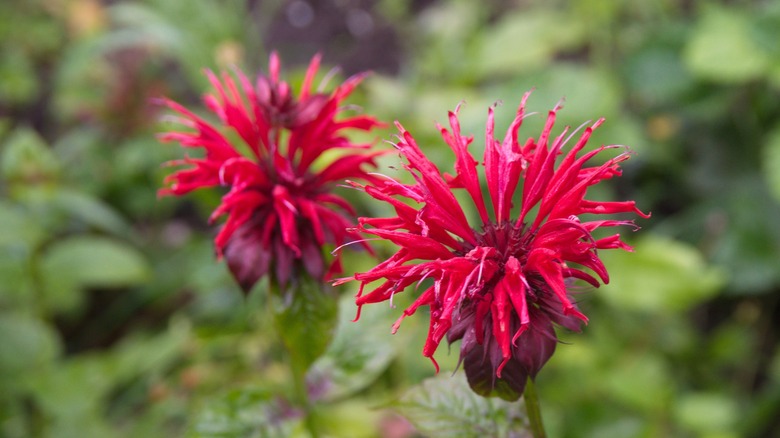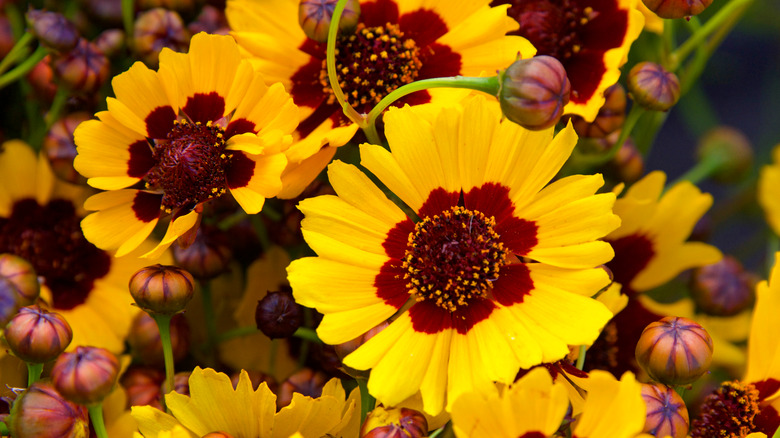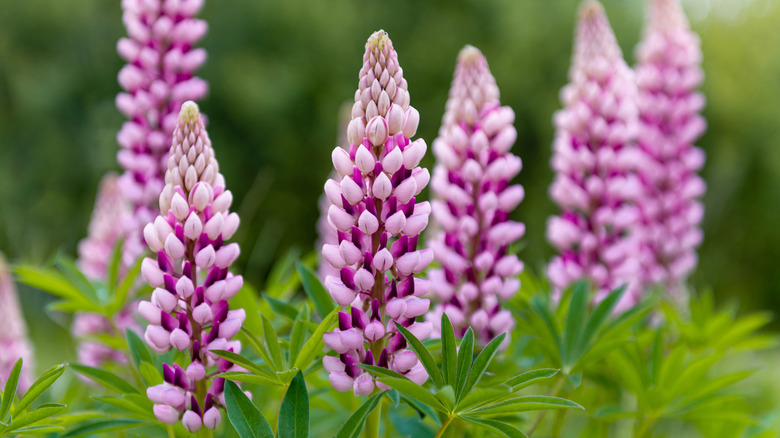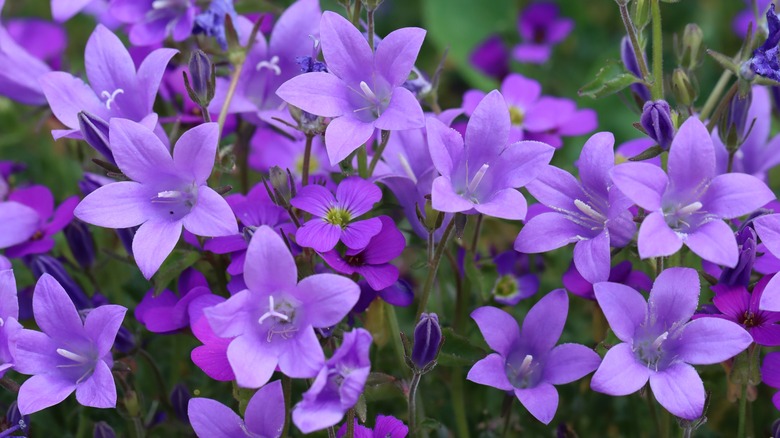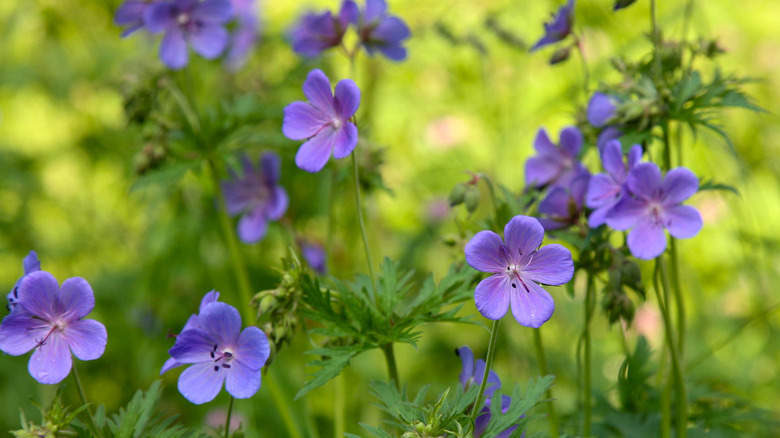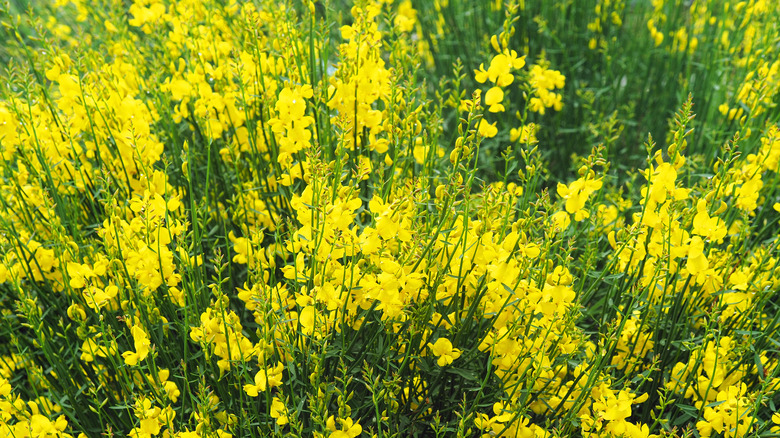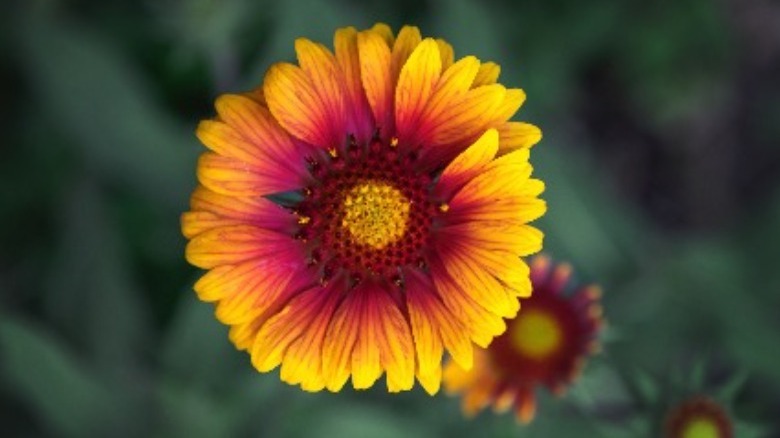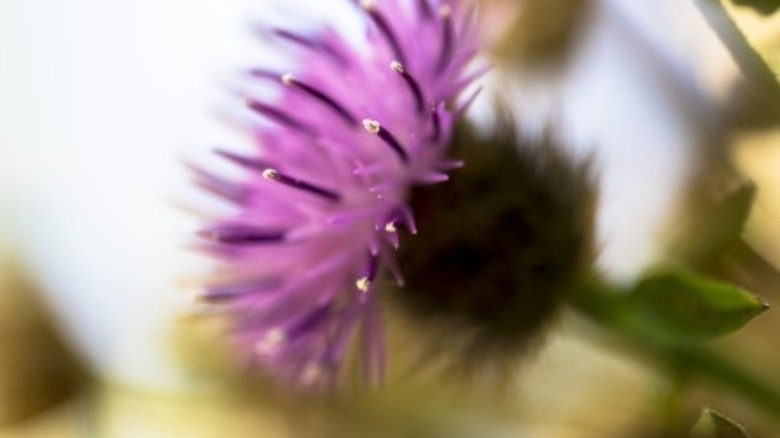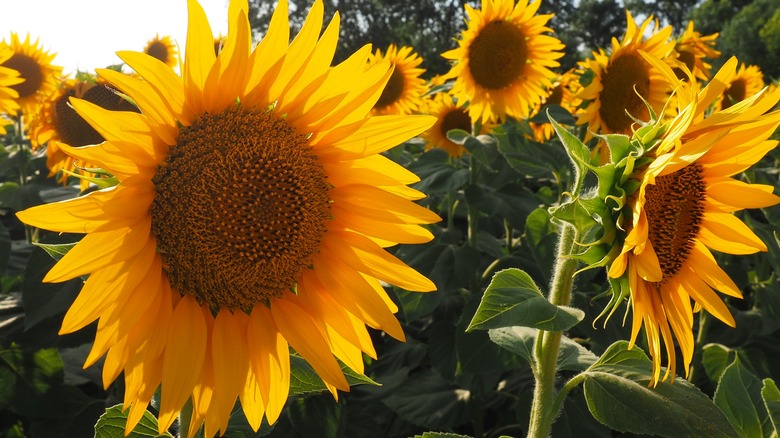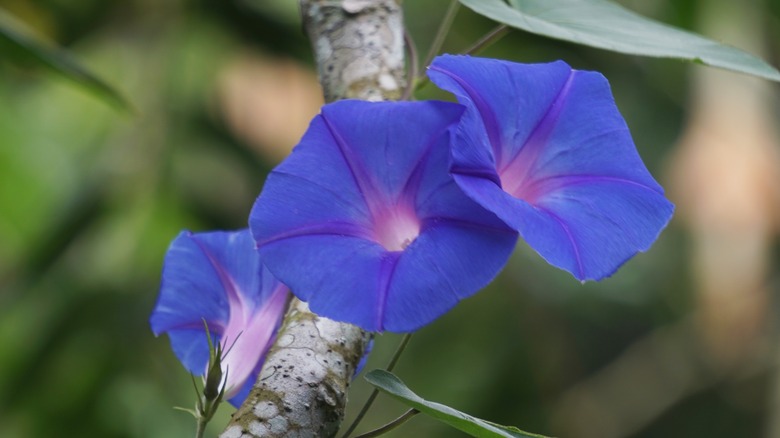15 Colorful Wildflowers You Can Grow In Your Garden
Have you ever been on a road trip and felt compelled to pull over and snap a photo of some stunning wildflowers on the side of the road? Sometimes nature's beauty is hands down the best beauty. Fortunately, you don't need to be cruising down a highway to enjoy the stunning impact of wildflowers — many can be grown in your own garden. Multiple varieties of wildflowers can thrive in domestic yards and they're easy to cultivate.
According to the USDA, the term wildflowers doesn't necessarily mean "wild," but rather the plants are native to where they grow. This means that not only can they grow in any portion of a region from which they come, but they're also often low maintenance when it comes to fertilizer and watering needs. Best of all, wildflowers are fantastic pollinators, which will bring a good boost of biodiversity to your garden by helping bees, butterflies, birds, and more.
1. Butterfly weed
Butterfly weed (Asclepias tuberosa) not only produces a vibrant orange, but it's also a strong host to the endangered monarch butterfly. According to Treehugger, this wildflower is native to prairies and grasslands in the Northeast and Southeast. While butterfly weed is a beautiful flower, it also requires a little patience — sometimes blooms won't appear for up to three years.
Bloom Season: Summer
USDA Growing Zone: 3 to 9
Growing Conditions: Partial to full sun
Soil Type: Slightly acidic to normal, well-drying
Size: 24 to 36 inches tall, 12 to 24 inches wide
2. Black-eyed Susan
Black-eyed Susans (Rudbeckia hirta) are bright, yellow flowers with huge black centers that truly stand out in a garden crowd. According to the Old Farmer's Almanac, these flowers can be shortlived. This said, if you plant them six weeks before the last frost, they'll bloom that same year, and perhaps just a few years thereafter.
Bloom Season: June to September
USDA Growing Zone: 3 to 9
Growing Conditions: Partial to full sun
Soil Type: Rich, well-draining
Size: 3 feet tall, 3 inches bloom diameter
3. California poppy
The California poppy (Eschscholzia californica) is California's state flower for a reason. These bright orange blooms line many California highways, and they're actually illegal to pick. But you can grow your own in your backyard without too much trouble. According to the Organic Gardening Research Center, they're drought-tolerant and hardy flowers.
Bloom Season: Mid-February or March
USDA Growing Zone: 8 to 10
Growing Conditions: Full sun
Soil Type: Alkaline, acid, or neutral soil
Size: 4 to 12 inches
4. Purple coneflower
Purple coneflower (Echinacea purpurea) transforms wildflower meadows pink every summer all over the country, and they're a beautiful addition to any garden, be it a potted accent plant or used as ground cover. According to American Meadows, these flowers will bloom and spread each year, bringing a happy summer snack to many pollinators like hummingbirds.
Bloom Season: July to September
USDA Growing Zone: 4 to 9
Growing Conditions: Full sun
Soil Type: Poor or lean soil
Size: 3 to 4 feet tall
5. Mexican hat
Mexican hat (Ratibida columnifera) flowers are unique-looking perennials that are drought-tolerant, which makes them an ideal choice for many places throughout the country. According to Gardener's Path, the cones can stretch as far as 2 inches above the petals, making them distinctive looking against other more common-looking flowers. They're an ideal choice for novice to intermediate gardeners looking for something different.
Bloom Season: May to October
USDA Growing Zone: 4-9
Growing Conditions: Full sun
Soil Type: Well-drained, calcareous soils
Size: 12 to 36 inches tall
6. Scarlet bee balm
Scarlet bee balm (Monarda didyma) truly exemplifies the "wild" in wildflowers with its magenta mane and scraggly petal tips. It was first introduced in New England and is still a popular wildflower garden choice there. According to Go Botany, Scarlet bee balm has been used by Cherokee Indians as a healing agent and remedy for headaches, colds, and insomnia.
Bloom Season: Late spring to mid-fall
USDA Growing Zone: 4 to 9
Growing Conditions: Full sun
Soil Type: Moist, rich loamy soil with high organic matter content
Size: 1 to 3 feet tall
7. Plains coreopsis
Plains coreopsis (Coreopsis tinctoria) is also known by the less-complicated name of golden tickseed. This colorful, friendly flower resembles a daisy but is actually far from it. Its attractiveness comes from its bright yellow petals accented with a maroon center that almost looks painted on. According to the Lady Bird Johnson Wildflower Center, this wildflower has been cultivated throughout the entire country.
Bloom Season: April to June
USDA Growing Zone: 2 to 11
Growing Conditions: Partial shade
Soil Type: Moist, sandy soil
Size: 1 to 2 feet tall
8. Lupine
Lupine (genus Lupinus) is a tall and slender flower that shows off in stunning lavender buds. It also comes in a bright blue variety popularly known as Texas bluebonnets. According to the National Park Service, lupines were once native to Maine, but are now all but extinct there. You'll now find various versions of this flower all over the U.S. But check with local experts before planting as they're considered to be an invasive species in some regions and can negatively impact monarch butterflies, as they crowd out their essential milkweed.
Bloom Season: Between late spring and mid-summer
USDA Growing Zone: 4 to 8
Growing Conditions: full sun
Soil Type: Well-draining soil
Size:12 to 36 inches tall
9. Bellflower
Bellflowers (genus Campanula) are so brightly colored, it's hard not to smile when stumbling across a garden of them. Their vibrant purple hue simply radiates from a garden bed, and according to GardenBeast, they'll thrive in a region with cool nights and temperate days. Use these wildflowers to brighten up a front walkway or backyard garden bed.
Bloom Season: June to October
USDA Growing Zone: 4 to 9
Growing Conditions: Full sun
Soil Type: Well-drained soil with moderate moisture
Size: 3 to 10 inches tall
10. Meadow cranesbill
Meadow cranesbill (Geranium pratense) is another happy purple wildflower, but much more dainty and delicate. According to The Wildlife Trusts, this perennial flower is ideal for woodland flower beds or anywhere else you want a small but powerful punch of color. These flowers are low drama, with a long blooming season and hardy reputation.
Bloom Season: Spring to fall
USDA Growing Zone: 3 to 9
Growing Conditions: Shade to full sun (not picky)
Soil Type: Chalk, clay, loam, or sand
Size: 2 to 3 feet tall
11. Scrambling meadow vetchling
Scrambling meadow vetchling (Lathyrus pratensis) has a name that sounds like something you'd perhaps hear in a "Harry Potter" book, but in actuality, it's a spunky, scrambling yellow flower that's planted in wildflower gardens all over the U.S. This flower grows in clusters of four to twelve yellow flowers, appearing sometime between May and August (per The Wildlife Trusts), thrilling bees and other insects.
Bloom Season: May to August
USDA Growing Zone: 4 to 8
Growing Conditions: Full sun
Soil Type: Moist soil
Size: 4 feet tall
12. Blanket flower
Blanket flower (Gaillardia) is a hardy perennial that loves its sunshine. According to Costa Farms, its vibrant yellow, orange, and red petals will attract butterflies all summer long. These colorful flowers are notoriously low maintenance — just give them some water semi-regularly and plenty of sunshine, and they'll bloom happily. These flowers are also deer-resistant, which will deter curious creatures from exploring your garden too closely.
Bloom Season: Summer
USDA Growing Zone: 5 to 9
Growing Conditions: Full sun
Soil Type: Moist, well-drained soil
Size: 18 to 22 inches tall
13. Common knapweed
Common knapweed (Centaurea nigra) doesn't sound like too flattering of a name, but this unique-looking wildflower brings interest and beauty to any garden. The knapweed comes from England, but is popular in temperate U.S. climates, too. Their bell-shaped petals are perfect for a bee to cozy up inside, so don't be surprised if you see some active pollinators in your yard. According to First Nature, birds and butterflies are also fond of these flowers.
Bloom Season: June to September
USDA Growing Zone: 4 to 8
Growing Conditions: Shade to full sun (not picky)
Soil Type: Dry, sandy
Size: 5 feet tall
14. Sunflowers
Sunflowers (genus Helianthus) are for more than just Instagram photos in the fall. They're a beautiful (and tall!) addition to any garden. Sunflowers grow rapidly and are interesting to observe. According to Gilmour, when the wildflowers are young, they'll track the sun for the majority of the day. As the plants mature, the flower heads will instead begin to face toward the ground.
Bloom Season: Summer
USDA Growing Zone: 2 to 11
Growing Conditions: Full sun
Soil Type: Well-draining soil
Size: Up to 12 feet tall
15. Morning glories
Morning glories (Convolvulaceae) love to climb. They'll climb across the ground, around a tree, and even up and over your fence and into your neighbor's yard. Thus, if you choose this adorable blue-purple vine flower for your colorful wildflower collection, be sure to keep it contained. According to Evergreen Seeds, this flower is lovely if you appreciate it, and a nuisance for those who see it simply as an invasive species.
Bloom Season: August to September
USDA Growing Zone: 3 to 10
Growing Conditions: Sun or shade, both are fine
Soil Type: Any
Size: 6 to 10 feet tall

